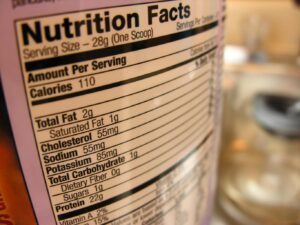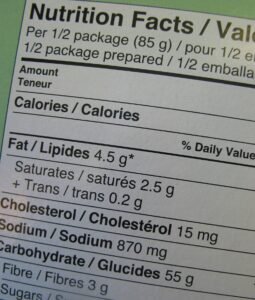
Reading food labels isn’t as complicated as you may think. It’s especially useful when you have type 2 diabetes. But how do you decode ingredients and percentages on the back of a package? From calories to fiber, fat, salt, sugar and total carbohydrates, every little detail counts.
To make it easy, we’ve created a guide, including some tips on what to look out for to help you make the best food choices for your body.
Check Out the Ingredients
First things first, start with the ingredients. The easiest way to do this is by making a habit out of flipping over your food package and reading the label.
Say yes to nutritious ingredients including monounsaturated fats like olive, canola or peanut oils are great for heart health. Whole-wheat flour, soy and oats are packed with nutrients, too.
Stay away from unhealthy ingredients, like hydrogenated or partially hydrogenated oil.
Note: Ingredients are listed in order by weight, with the heaviest ingredient (which is also the main ingredient) listed first and other ingredients listed in descending order.
Consider the Carbohydrates
If you’re eating a low-carb or no-carb diet, knowing how to identify carbs is important.
Identify total carbohydrates. Take a look at the total carbohydrates (in grams), not just sugar. This number includes all sugars – like added sugars – complex carbs and fiber.
Don’t just look at sugar content alone because you may pass up wholesome foods that are naturally high in sugar like milk and fruit.
Also, be mindful about foods with no natural or added sugars because they’re often loaded with carbs.
Don’t skip the fiber.High-fiber foods are your friends. Look out for foods with at least 3 grams of fiber per serving.
Don’t Ignore the Sugar-free Ingredients
Sugar-free products. Sugar-free is important for managing diabetes, but pay attention to carbohydrates. If the label says sugar-free and there are fewer carbohydrates, you’re good to go.

If the choice is between a sugar-free product with just as many carbohydrates as a standard product, you’re better off choosing based on price or taste.
Quick Tip: When you see sugar-free on a label it means less than 0.5 grams of sugar per serving.
No sugar added doesn’t mean low or no-carb. A lot of food labels say “no sugar added” but these foods might have tons of carbs. No sugar added simply means no sugar was added during processing or packaging.
Sugar alcohols have hidden carbs. Sugar alcohols often found in foods include sorbitol, xylitol and mannitol, often used in sweeteners, are not necessarily free of carbs or calories.
Be Mindful About Fat-free Products
Fat tends to have twice as many calories as carbohydrates and protein, which is why fat-free foods sound appealing when walking the grocery aisles. But, there are still things to look out for before adding fat-free food to your cart.
Fat-free foods still have carbohydrates. Before being wooed by fat-free messaging, read the food label to compare carbohydrates and calories in fat-free foods vs. standard products. Fat-free foods often have more calories and even more carbohydrates than the standard version.
Remember total fat doesn’t paint a full picture –– always look at the different types of fat listed.
Opt for healthy fats. Polyunsaturated and monounsaturated fats may be high in calories but they are also great for heart health and are known for lowering cholesterol.
Stay away from unhealthy fats.Avoid saturated fats and trans fat. They can not only increase your risk of heart disease but they can also raise your cholesterol.
It’s important to note that food labels serve as a guide to help you identify which foods to avoid and which foods to keep. When you see “free” messaging know that free means:
- Fewer than 20 calories per serving
- Less than 5 grams of carbs per serving
Know Serving Sizes and Calorie Goals
Compare your serving sizes. Make sure the serving size on your food labels matches up with your meal plan. If you’re eating 2x’s above the serving size you’re also doubling calorie, fat, carb, protein and sodium intake.
Stick with your daily calorie goals. This is also true for Daily Value. The Daily Value percentage is based on a 2,000 calorie diet (per day). A Daily Value of five percent or less is considered low and 20 percent or more is considered high.

As a rule of thumb, you’ll want to keep your fiber, minerals and vitamins Daily Value high and your fats, sodium and cholesterol low.
Adjust percentages for Daily Value based on your doctor or registered dietitian’s recommendations if you’re required to eat more or less than 2,000 calories per day.
At the end of the day, what you decide to eat is up to you. Use food labels as a guide to help you meet your healthy-eating goals.
Jun. 02 2021